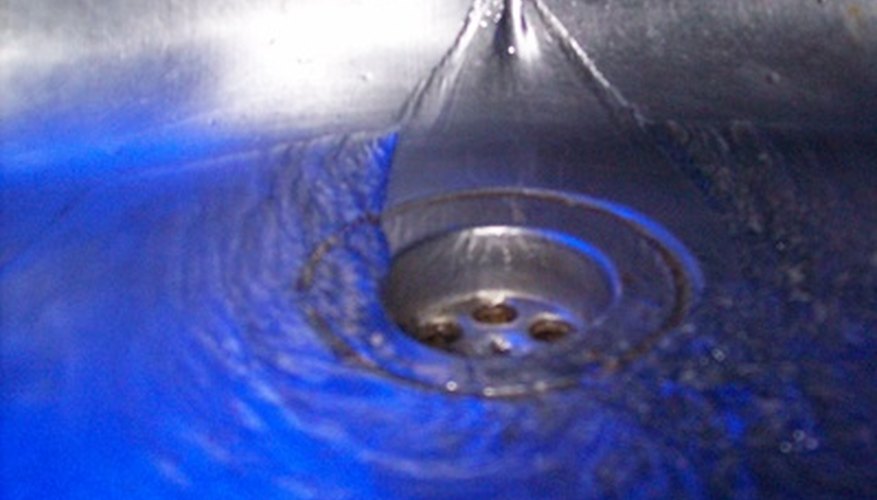Stainless steel kitchen sinks fit into just about any design and are simple to keep clean. They are also gentler to your dishes than stone or cast iron sinks---and lighter to carry. When out of their place in the kitchen, though, they can dent or puncture. Fixing a hole in your stainless steel kitchen sink was traditionally done by welding, but if you don't have expensive welding equipment and don't know anyone who does, you can use stainless steel epoxy to fix the hole yourself.
Clean the surface of your sink, inside and out. Make sure it is dry before you begin your repair.
Place the wood block inside the sink and over the hole. Take your mallet or hammer and reach around (or get a helper to hold the block inside while you work from the outside) to the hole on the outside of the sink. Lightly tap any flared stainless steel from around the hole. You don't want to dent other parts of the sink, but you are trying to make the remaining metal of the hole flush with the rest of the sink.
- Stainless steel kitchen sinks fit into just about any design and are simple to keep clean.
- Take your mallet or hammer and reach around (or get a helper to hold the block inside while you work from the outside) to the hole on the outside of the sink.
Sand the surrounding area of the hole with 200 grit sandpaper on the outside of the sink. You need to "scuff up" the metal so the epoxy will bond more strongly.
Spray the area around the hole with a mixture of 50 per cent water and 50 per cent ammonia combined in a spray bottle. Wipe clean and dry with your rags. Ammonia and water will remove impurities from the area.
Mix the epoxy according to the manufacturer's instructions. Spread the mixture on the outside of the sink with your putty knife. Work the epoxy into the surface as much as possible. Use your hands and make sure there are no air bubbles. Work from the inside of the sink as well and make sure no epoxy is protruding from the inside of the hole. Work it out with your hands to get a smooth inside surface.
- Sand the surrounding area of the hole with 200 grit sandpaper on the outside of the sink.
- Work from the inside of the sink as well and make sure no epoxy is protruding from the inside of the hole.
Cure the epoxy according to the manufacturer's instructions. After the epoxy has cured, test your repair for leaks by filling your sink, allowing the water to stand for 10 minutes and then checking for leaks. If your repair is leak-free, sand the outside of your repair with 400 grit sandpaper to make sure it's smooth. If there are leaks, reapply the epoxy. There may be an air bubble or gap you did not notice the first time.
